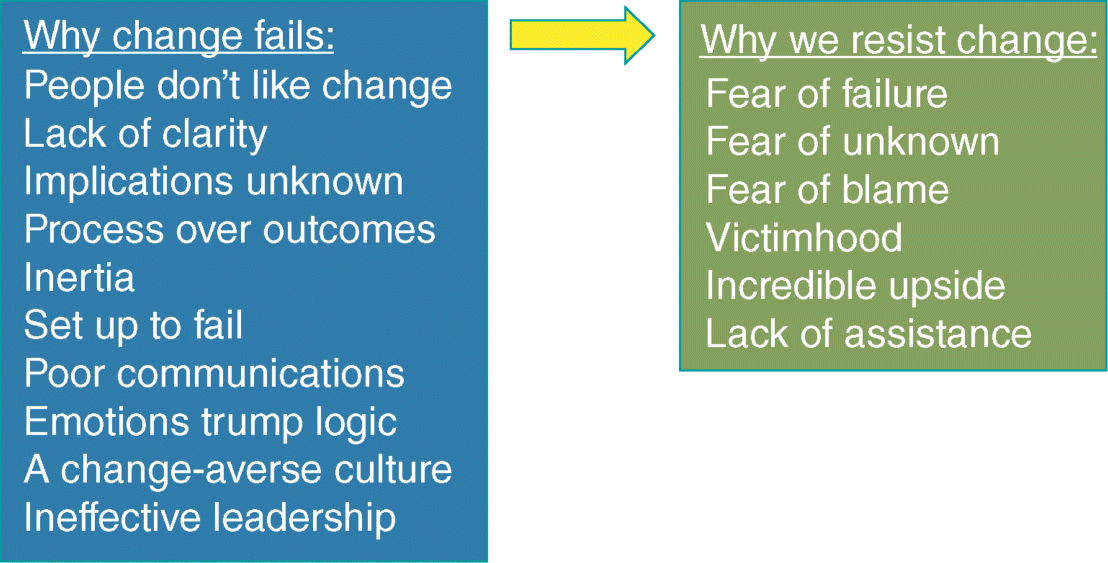Part FiveAnd Finally, Tell ‘em What You Told ‘em
It's a Wrap
And so, with the dulcet tones and sage advice of my old Churchill-inspired Air Force Writing Skills instructor ringing in my ears, let me do my best to summarise the last 35 chapters.
Eighty-eight per cent of change initiatives fail. A similar proportion of mergers and acquisitions fail. A similar proportion of corporate strategies fail. A similar proportion of large IT projects fail.
If you actually pause for a second and think about this figure, it is quite staggering. Change has an 88% failure rate. No leader who embarks upon an exciting new adventure sets out to fail, obviously. Yet, seven out of eight times, they do.
The two questions that naturally follow on from this alarming statistic are:
- Why?
- How can I make sure that my next change initiative/M&A/strategy/IT project is among the one in eight that succeeds?
Why?
The top ten reasons why the vast majority of change initiatives fail to deliver their anticipated outcomes are listed in the left-hand box of the figure, starting with the main over-riding reason – that people simply don't like change.

Why people resist change, outlined in the right-hand box, is often due to a combination of three big fears (the fear of failure, the fear of the unknown and the fear of being blamed). The lure of victimhood is another powerful and paralysing force for inaction. ...
Get The Change Catalyst now with the O’Reilly learning platform.
O’Reilly members experience books, live events, courses curated by job role, and more from O’Reilly and nearly 200 top publishers.

